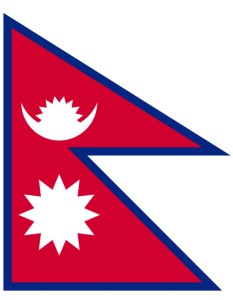 Nepal continues to face difficult questions in addressing the legacy of the civil conflict that spanned 1996 to 2006. On March 14, 2013, Nepal’s President Ram Baran Yadav passed an ordinance creating a Truth and Reconciliation Commission, which was first called for by the 2006 peace accords that ended the decades long conflict. However, the ordinance was prepared without input from victims or human rights institutions and both national and international organizations have identified numerous problems with the mandate and the structure of the Commission. Only two weeks later on April 1, a justice on Nepal’s Supreme Court suspended the ordinance from taking effect pending a further review of the planned Commission.
Nepal continues to face difficult questions in addressing the legacy of the civil conflict that spanned 1996 to 2006. On March 14, 2013, Nepal’s President Ram Baran Yadav passed an ordinance creating a Truth and Reconciliation Commission, which was first called for by the 2006 peace accords that ended the decades long conflict. However, the ordinance was prepared without input from victims or human rights institutions and both national and international organizations have identified numerous problems with the mandate and the structure of the Commission. Only two weeks later on April 1, a justice on Nepal’s Supreme Court suspended the ordinance from taking effect pending a further review of the planned Commission.
Civil society groups have advocated for the creation of an effective process that promotes both individual accountability and national healing in Nepal. The civil conflict resulted in the deaths of 13,000 people, with an additional 1,300 people missing. An independent report by the International Commission of Jurist found that both parties to the conflict – the Nepalese army and members of the former Maoist rebels – committed grave human rights violations. Moreover the United Nations Office of the High Commissioner for Human Rights reports that at least 9,000 international law violations took place during the prolonged conflict, although to date no one has been prosecuted for any conflict-related human rights violations.
Entitled Ordinance on Investigation of Disappeared People, Truth and Reconciliation Commission, 2069, the recent law calls for the immediate creation of a two-year Truth and Reconciliation Commission composed of five independent commissioners. Under the ordinance, the Commission’s functions include “bring[ing] the real fact before [the] public by investigating truth of the cases in relation to the event of serious violation[s] of human rights including disappeared persons in the course of armed conflict,” and “reconcil[ing] the perpetrator and the victim.” The Commission would investigate both known human rights violations as well as violations brought to its attention by or on behalf of a victim. Some hearings may be public and upon its conclusion the Commission would release a report on their findings and recommendations for individual perpetrators to be either granted amnesty or prosecuted by the Attorney General in Nepal. The Commission would also provide recommendations to the Nepalese government on the appropriate compensation for identified victims.
Perhaps the most problematic aspect of the Commission’s mandate is the possibility of amnesty for those who have committed serious human rights violations. Although the ordinance states that “serious crimes which lack sufficient reasons and grounds for granting amnesty following the investigation of the Commission, including rape, shall not be recommended for amnesty by the Commission,” it is difficult to understand what sort of violations, other than rape, would be excluded. The question of amnesty is further blurred because the ordinance explicitly limits the Commission’s mandate to only addressing “serious violations of human rights.” The ordinance definition of “serious violations” as those carried out “against the civilian population or unarmed persons in a systematic manner” leads to a further concern. By excluding other violations of human rights that were not systematic but rather ad hoc, this definition might solely address crimes against humanity, which in the assessment of the International Commission of Jurists “excludes almost all of the violations and crimes that were committed during the conflict.”
Structurally, the Commission lacks guarantees of impartiality and independence that are required to ensure a meaningful and effective process for national reconciliation. These concerns stem in part from the requirement that the Commission to obtain government permission before obtaining any international support, which effectively serves as a built in Commission dependency on the government for funding and resources. The Commission’s potential has also been curtailed by its work being limited to only two years, which provides a slim chance at best that the Commission could address a conflict that spanned ten years and resulted in thousands of deaths and disappearances.
Although the ordinance has already passed the legislature and was signed by the president, the the Nepalese Supreme Court injunction against the law suggests that perhaps it is not too late to shape a better Truth and Reconciliation Commission that resolves the serious flaws that have been publicly raised.
